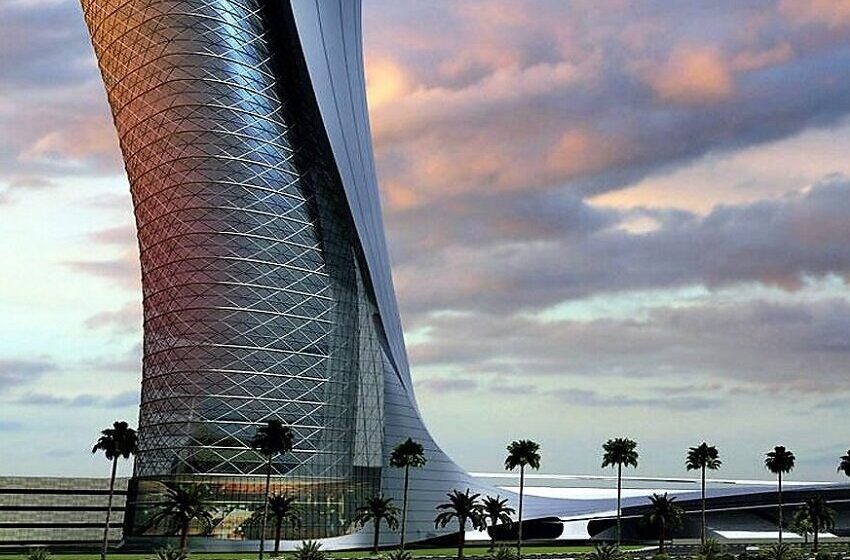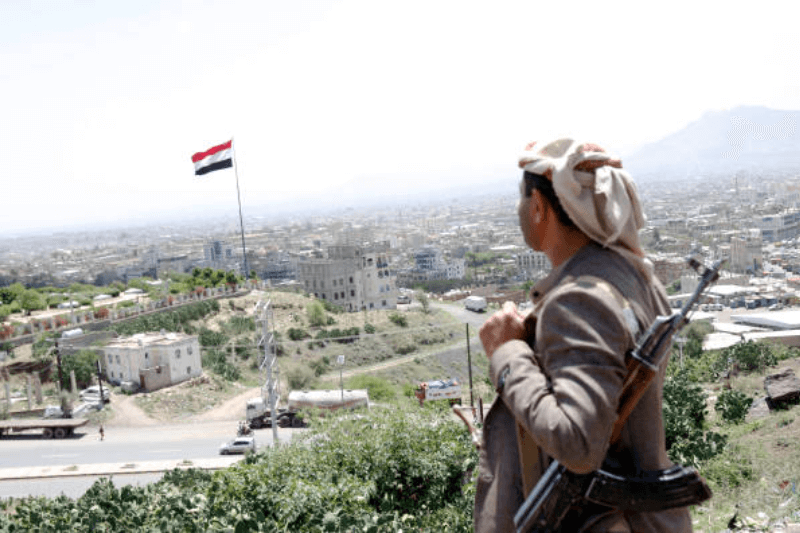
What makes Abu Dhabi so great?: Demystifying its success across sectors
As a member of the UAE, Abu Dhabi contributes to the GCC’s second-largest economy and the world’s thirty-first. While the United Arab Emirates is home to the world’s sixth-largest proven oil reserves, the country has made concerted efforts to diversify its economy away from hydrocarbons. Today, the non-oil sector accounts for over 75% of nominal GDP at the federal level. About 60% of the GDP of the United Arab Emirates comes from Abu Dhabi. And as of this past November, 2019, the emirate’s sovereign credit ratings were the highest in the MENA area, with Aa2 from Moody’s, AA from S&P, and AA from Fitch.
The Big Picture
According to the International Monetary Fund, its residents have the second-highest GDP per capita in the world, at $87,586. However, the local economy has been impacted by the worldwide oil price collapse, which saw average prices fall from more than $100 per barrel to about $55 in 2014, rebound to about $70 in 2018, then plunge to $20 in April 2020 and recover marginally to $40 in June 2020 amid the Covid-19 pandemic. S&P estimates that the hydrocarbons industry still provides Abu Dhabi with more than 90% of central government revenue and accounts for around 50% of the country’s real GDP. Weak job growth, a cooling property market, and a weakening hospitality sector are just some of the problems plaguing the non-oil economy.
Private industry is also adjusting to lower direct government spending; for example, Abu Dhabi’s investment project awards in 2019 are expected to be around $23bn, down from $45bn in 2012. Due to these causes, real GDP expanded by 1.25 percent last year and is projected to expand by 1.45 percent next year. Ghadan 21, or Tomorrow 21, is a short-term development strategy implemented by the Abu Dhabi government in response to the aforementioned economic challenges, with the ultimate goal of making the emirate a more desirable place for business and private sector investment.
Abu Dhabi Investments in the Economy
The Abu Dhabi Economic Vision 2030 is guiding the emirate’s efforts to achieve its long-term development goals. Abu Dhabi’s Department of Economic Development (ADDED) collaborates with the General Secretariat of the Executive Council to create a five-year plan based on this economic blueprint. For the purpose of weaning the economy off the hydrocarbons revenue, the Abu Dhabi Economic Vision 2030 strategy specifies a variety of sectors in which Abu Dhabi may reasonably aim to use its comparative advantages.
Among these are the travel and hospitality industries as well as production, logistics, healthcare, education, banking, aerospace, and telecommunications. A number of macroeconomic and macro-fiscal goals were set as part of the strategy as well, including: creating a business climate that is open and globally integrated; adopting a fiscal policy that is responsive to economic cycles; creating a monetary and financial market environment that is resilient and has inflation levels that are manageable; increasing the effectiveness of the labor market; expanding infrastructure that can support economic growth; and facilitating financial market development.
The strategy’s primary goals are supported by a variety of other long-term programs. To help people in Abu Dhabi change their travel habits to be less taxing on the environment, the Transportation Mobility Management Strategy will be fully implemented by the year 2030. As part of this initiative, we will be working to expand public transportation options by bolstering already existing systems and establishing a comprehensive, multi-modal transport network. The Surface Transport Master Plan outlines the proposed expansion of the existing transportation infrastructure, with an eye toward promoting environmentally friendly modes of public transportation including walking and cycling. Meanwhile, Abu Dhabi Environment Vision 2030 is an Abu Dhabi-specific framework that aims to protect the emirate’s natural heritage via action in five key areas: clean air and noise pollution; water resources; waste management; biodiversity; and trash.
Abu Dhabi’s Finance Sector
In 2019, the banking and insurance industry accounted for 6.7% of the overall GDP, making it the second largest non-oil contributor. Although there are many non-bank financial institutions in Abu Dhabi, such as holding companies, trusts, and financial leasing organizations, SCAD reports that banks are by far the most important financial intermediaries in the city. In 2017, the National Bank of Abu Dhabi and the First Gulf Bank merged to form First Abu Dhabi Bank, a regional behemoth and one of the three “big five” banks in the United Arab Emirates. The Abu Dhabi National Insurance Company, Al Ain Ahlia, and the Emirates Insurance Company are three of the top five insurers in the United Arab Emirates in terms of total assets, and all three have their headquarters in Abu Dhabi.
As of March 2020, the Abu Dhabi Securities Exchange had the greatest market capitalization in the United Arab Emirates, with Dh387.9bn ($105.6bn). ADGM’s inauguration in late 2015 has boosted Abu Dhabi’s reputation as a financial hub. There are over 120 regional and worldwide financial service organizations based in ADGM, making it a major component of the emirate’s growth strategy. ADGM is home to over 2,600 registered financial and non-financial businesses. Among ADGM’s many services, wealth and asset management stand out for their unique approach to developing financial technology (see Trade & Investment chapter). ADGM has also been instrumental in shifting the focus of investment activity and discussion in the region toward greener forms of funding (see Capital Markets chapter).
Keep Reading
Abu Dhabi Diversification
The real estate market, which accounted for about 3.6% of GDP in 2019, has been a major driver of Abu Dhabi’s diversification initiatives, thanks to the emirate’s image as a safe haven and the demand emerging from Dubai’s Expo 2020, which has been postponed until October 2021. Since the United Arab Emirates has a high per capita income, the wholesale and retail sector has grown rapidly, accounting for 3.9% of GDP in that year. Investment in fields like social media, television and broadcasting, and digital and creative media content is propelling the emirate’s information and communication sector, which accounts for about 3% of GDP. Big-ticket projects like the Midfield Terminal Building at Abu Dhabi International Airport and the construction of the 1500-km Etihad Rail network are helping the transportation and storage sector, which accounted for approximately 2% of GDP, expand.
Abu Dhabi Infrastructure
United Arab Emirates citizens are happier than ever with the country’s transportation system. Presently 84% are pleased with the nation’s public transportation services, up from 54% in 2009. Compared to 2009, when only 66% of UAE people were content with the roads and highways in their cities and neighborhoods, today 90% express satisfaction. Road and highway satisfaction is highest in Abu Dhabi and Dubai, but is on the rise across the United Arab Emirates as a whole.
The United Arab Emirates (UAE) has invested much in transportation services and infrastructure, which has led to higher ratings. In recent years, Abu Dhabi has launched a new fleet of buses for its people to utilize for 1 dirham every ride (about 27 cents in American currency), and it has begun upgrading its bus scheduling system. About seven thousand new, environmentally friendly taxis were introduced to the city in 2007, and construction is underway on a metro train system, three personal rapid transit systems (tiny cars that drive along fixed guideways), and a ferry link with Dubai. One of two proposed metro lines in Dubai has been operational since 2009. A double-decker road was constructed in Dubai to reduce traffic congestion near the Dubai Mall, and the Al Ittihad Road between Dubai and Sharjah, a notoriously congested stretch, was widened.
These changes to the country’s infrastructure, and the positive effect they seem to have had on locals, coincide with a large increase in the population. According to the UAE’s National Bureau of Statistics, the country is home to about 8 million people. Of these, the vast majority are foreign visitors and expats. In only those four years, the population increased by 65 percent. While the millions of blue collar workers who migrate to the UAE annually may not care about access to modern and reliable transportation, this amenity could be a selling point for companies seeking to hire highly skilled foreign workers.
Abu Dhabi’s High Marks for Healthcare
The United Arab Emirates also performs well on other measures of life satisfaction. While 89% of UAE residents claim being healthy, 14% admit to experiencing some form of health issue. In addition, 80% of UAE residents are satisfied with the level of healthcare that is available to them, with Emiratis being slightly more satisfied than non-Emiratis (85% vs. 75%). The United Arab Emirates (UAE) provides financial support for its citizens to have medical treatment abroad, however this assistance is not extended to foreign nationals.
If you ask locals, you’ll hear that the United Arab Emirates (UAE) takes care of the environment well. The United Arab Emirates has some of the highest per-capita usage rates of both electricity and water in the world. However, several high-profile initiatives have left an influence, such as Abu Dhabi’s installation of 7,000 recycling bins and the plans for Masdar City, which will use entirely renewable energy sources. Eighty-seven percent of UAE residents are pleased with their government’s efforts to protect the natural world.
The significant improvements in two areas contribute to the strong overall ratings for the environment. The first is the state of the country’s air, which has suffered from dust storms and anthropogenic pollution like car exhaust. There has been increased focus on reducing and controlling air pollution in recent years. As of 2016, 87% of UAE residents reported being satisfied with the air quality, up from 73% in 2009. Water quality, the second environmental goal, is currently considered satisfactory by 83% of the population, up from 73% in 2009. While the United Arab Emirates is located in a desert, its citizens are among the world’s highest users of water. The government of the United Arab Emirates (UAE) provides its citizens with desalinized seawater at low cost. They have the world’s greatest per capita usage of bottled water.
Read: Why cut down on your consumption of salt
Abu Dhabi’s Holistic Performance
There is a clear benefit for the UAE due to the high level of well-being among its citizens; this might assist the country maintain political stability during a time of regional turmoil and attract the foreign talent the country needs for economic growth. By 2030, the Abu Dhabi emirate hopes to have a GDP five times larger than it is today, and it also wants to see its non-oil revenues catch up to its oil revenues by that year. This developing nation takes great pride in its economic success.




